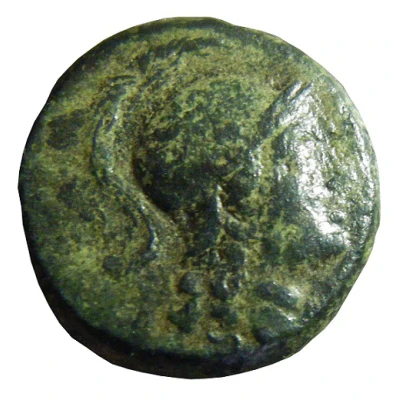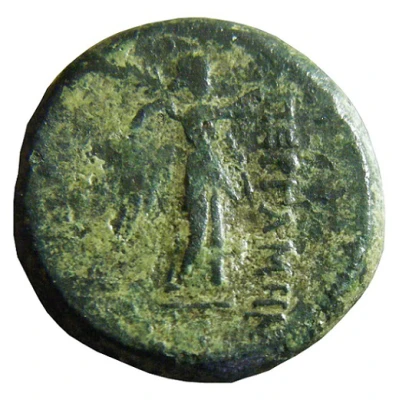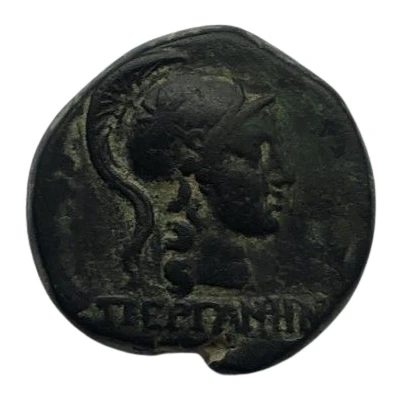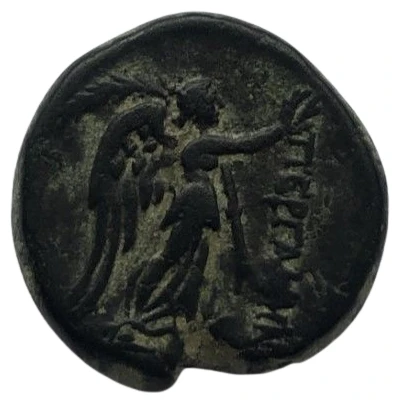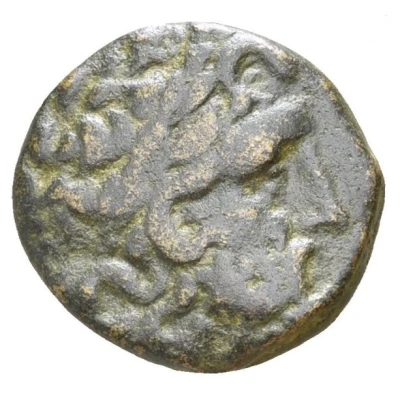
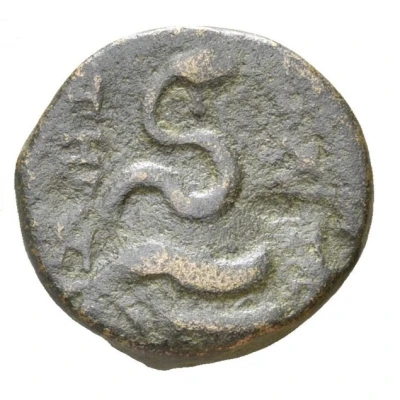

© Alfgard (CC BY-NC-SA)
Hemiobole 190 BC - 133 BC
| Copper | 6.92 g | 18 mm |
| Issuer | Pergamon (Mysia) |
|---|---|
| Type | Standard circulation coin |
| Years | 190 BC - 133 BC |
| Value | Hemiobol (1⁄12) |
| Currency | Drachm |
| Composition | Copper |
| Weight | 6.92 g |
| Diameter | 18 mm |
| Thickness | 4 mm |
| Shape | Round (irregular) |
| Technique | Hammered |
| Orientation | Medal alignment ↑↑ |
| Demonetized | Yes |
| Updated | 2024-10-10 |
| Numista | N#95831 |
|---|---|
| Rarity index | 82% |
Reverse
Serpent of Asklepios wrapped around the omphalos .
Script: Greek
Lettering: AΣKΛHΠIOΥ ΣΩTHΡOΣ
Interesting fact
The Hemiobole coin from Pergamon (Mysia) was used as a form of currency during the Hellenistic period, and its design features a unique blend of Greek and Persian influences. The obverse side of the coin depicts the head of the Greek goddess Athena, while the reverse side features a stylized representation of the Persian king, Darius III. This fusion of cultural elements reflects the complex political and cultural landscape of the region during that time.
